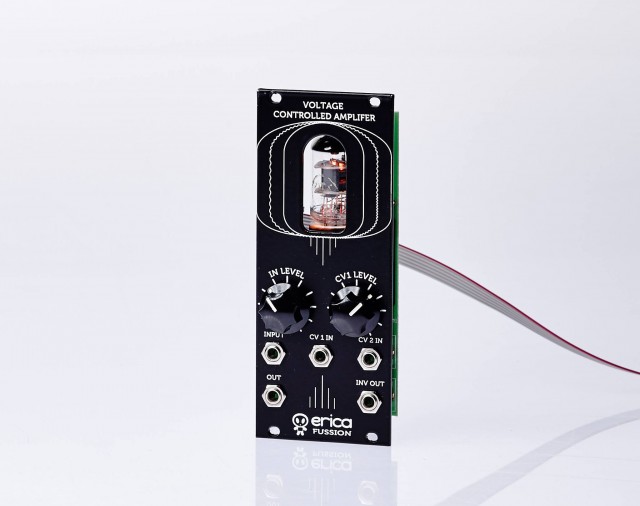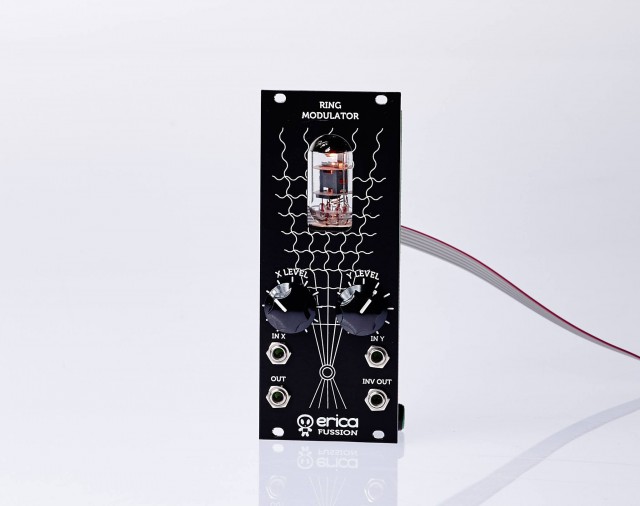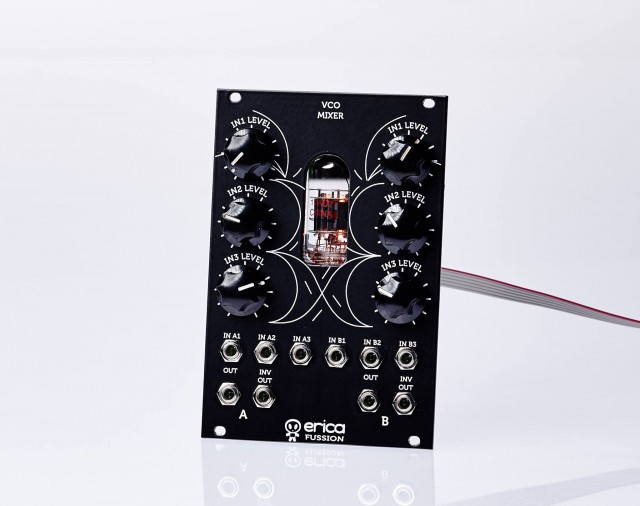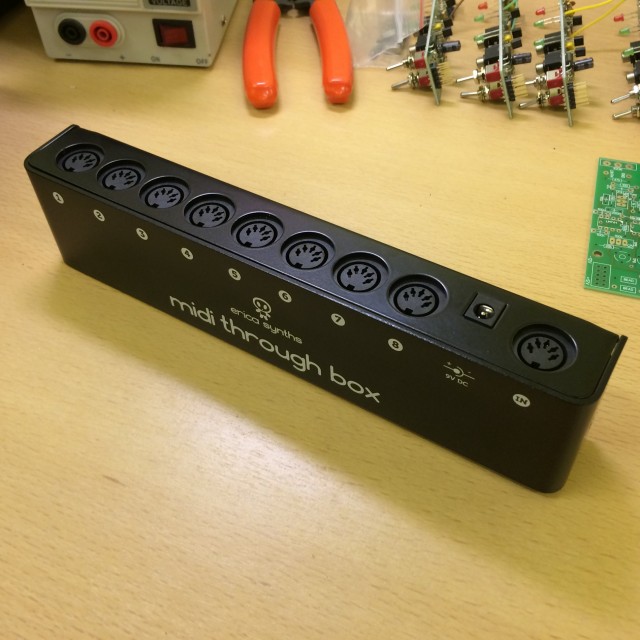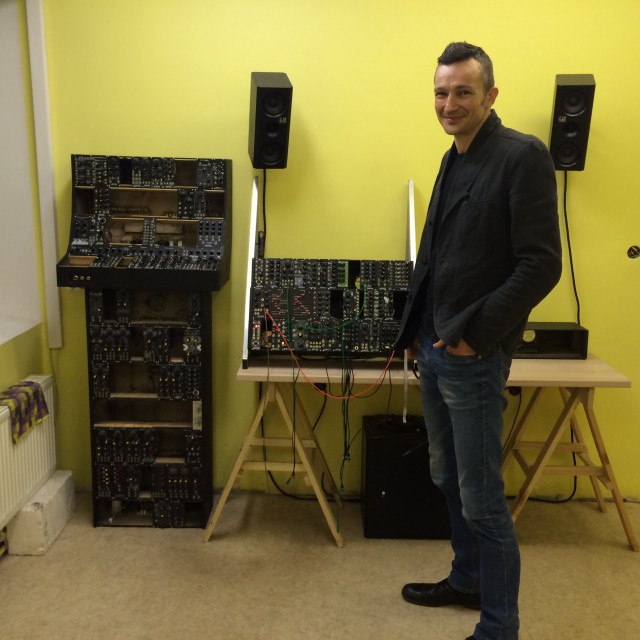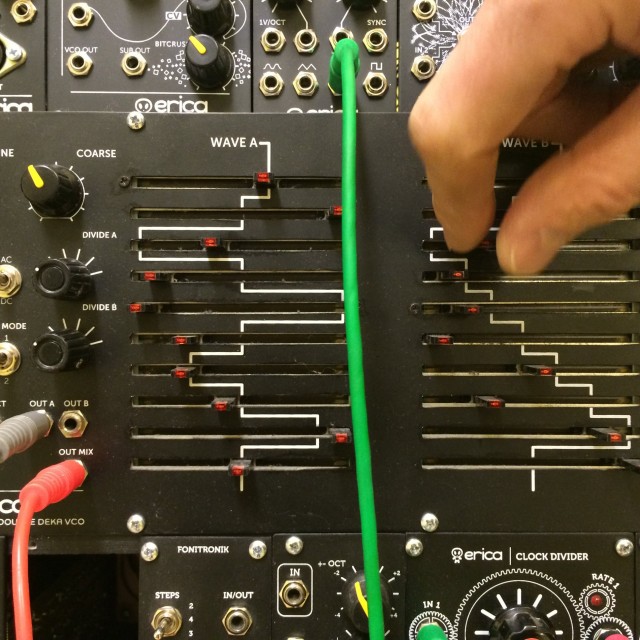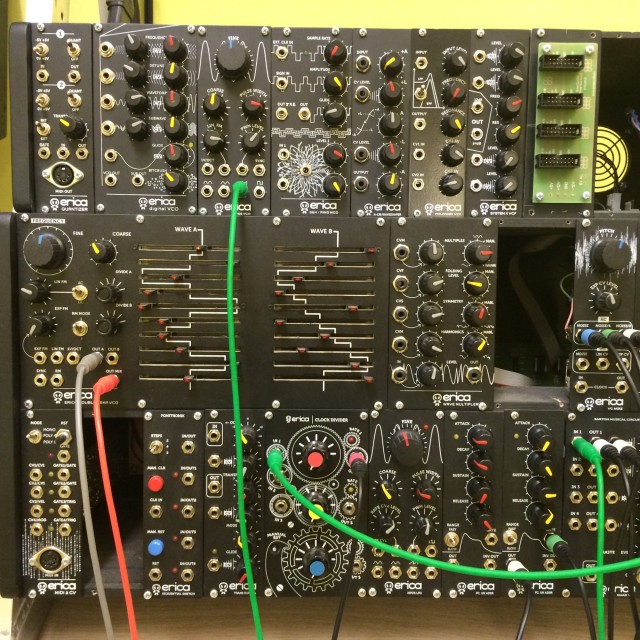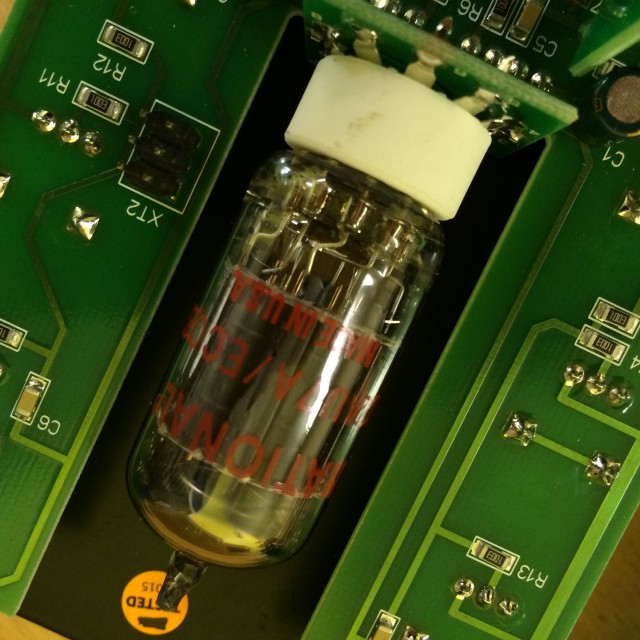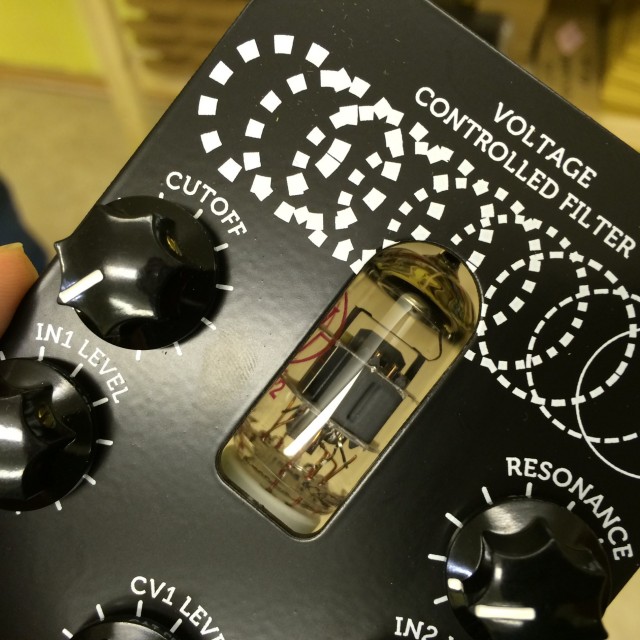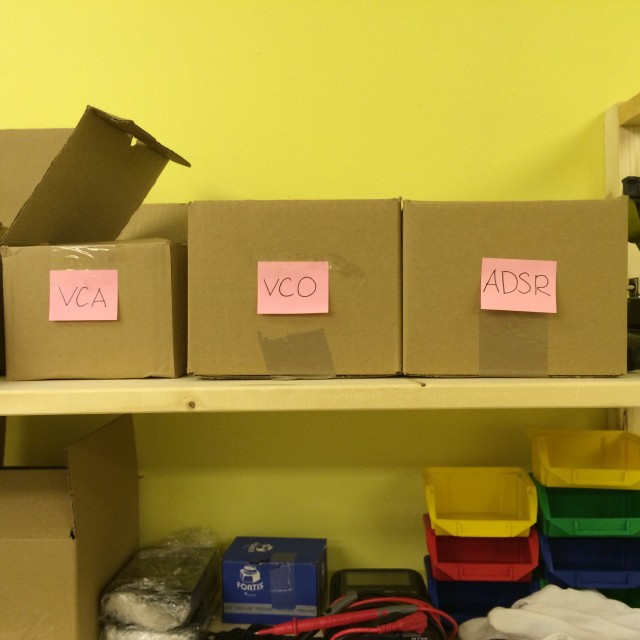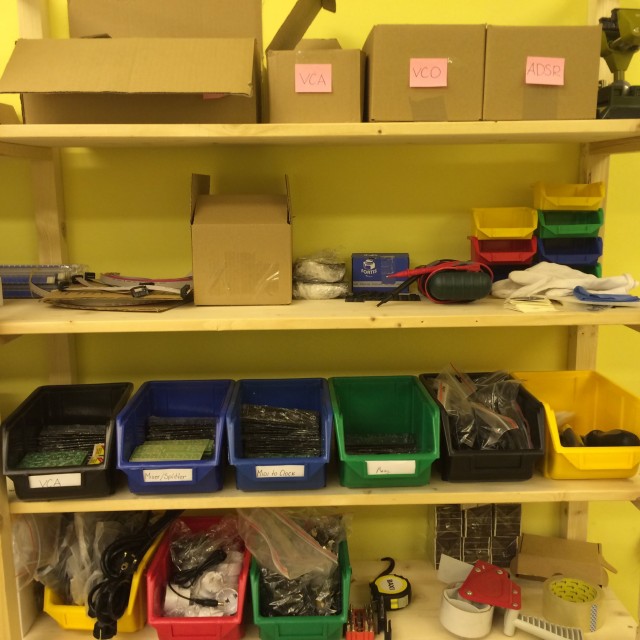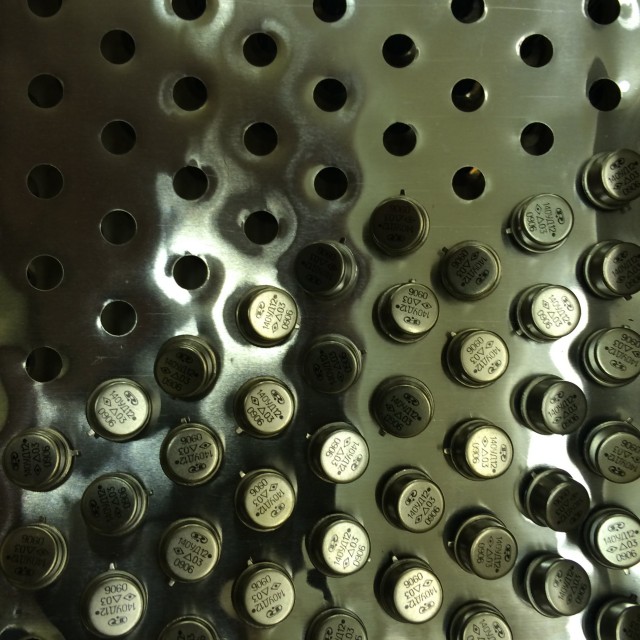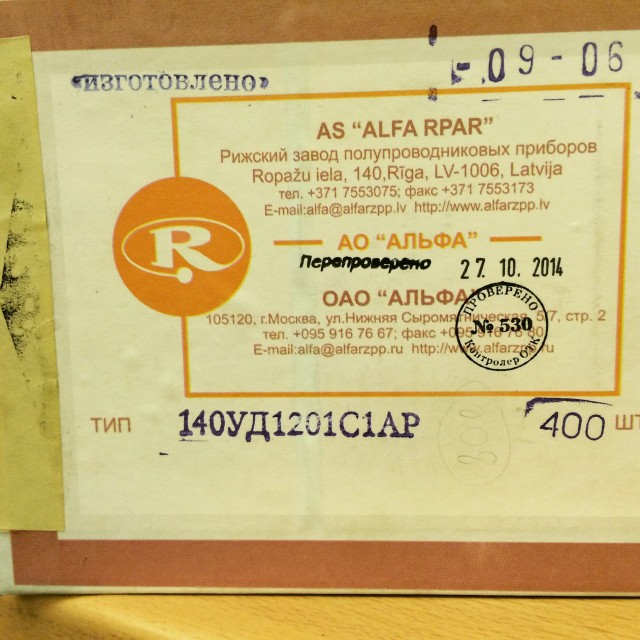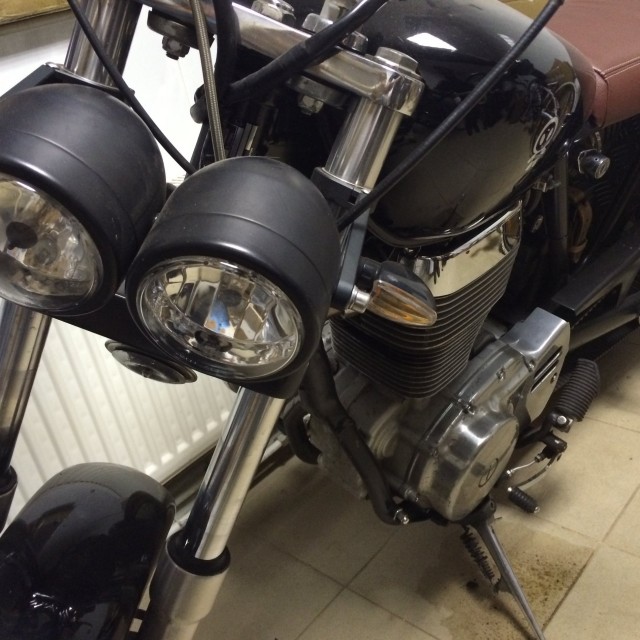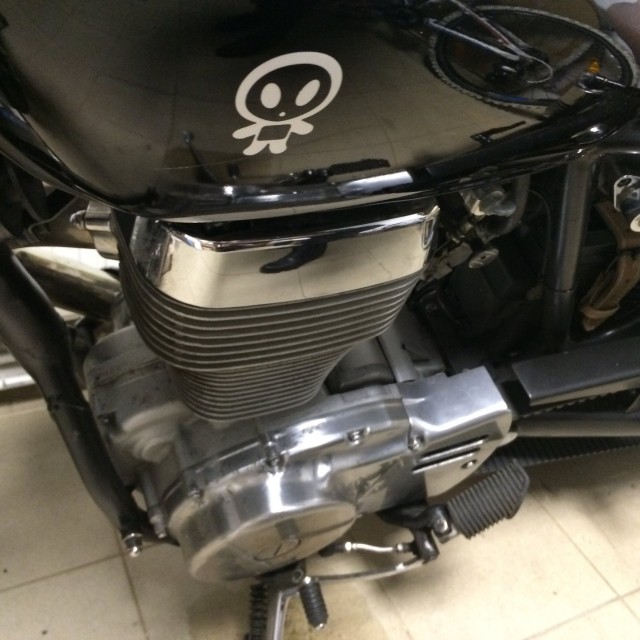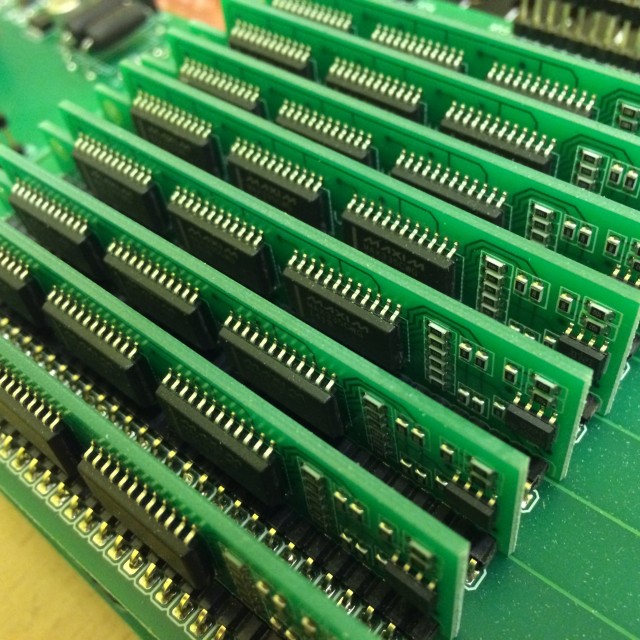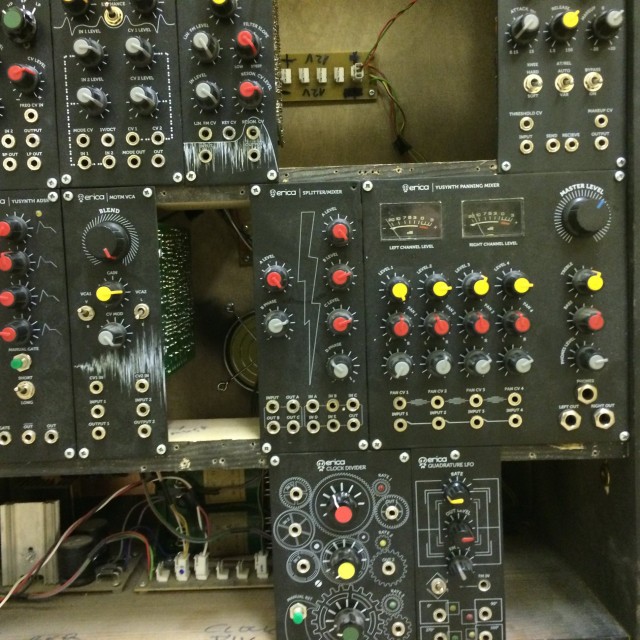Forget the notion that new technologies replace old, that design is a steady progression from past to future. Think, instead, of music – variations on a theme, modernity made from the spare parts of the past.
Latvia may be eager to shed its Soviet past, and with good reason. But part of the legacy left behind is a history and expertise in engineering. Rīga, the Latvian capital in this Baltic country, was home to the mighty RMIF synth company and Blue Microphones, among others. The economic strain of the Soviet union sometimes required these makers to be even more ingenious in finding electronics solutions; the respect they’ve earned in the West isn’t mere exoticism – it’s real electronics cred, and well earned.
Erica Synths is a boutique maker built at the juncture between Latvia’s maker past and its present and future. Some parts, and even engineering, come from RMIF veterans. You’ll find vintage tubes and Polivoks op-amps (the circular objects in one of my photos here). And then you’ll also find new suppliers and hints of the future – yes, MIDI, and yes, you’ll spot a display prototype. (I can’t share what that’s about, but maybe you can guess.)
What might surprise you is that the so-called “vintage” parts are being made anew. Look at those beautiful glass tubes, and you’ll see Made in China, or – check my photo – Made in the USA. (As noted in comments, that indication may mean this is a vintage tube. China, at least, is making new ones, actively in production and rolling off the assembly line.) Other companies continue to make new former-Soviet Polivoks components. And apparently demand for these components stays high. It’s been highly-publicized that film stock – Kodachrome, Polaroid – has gone out of production. But what has failed to make news is the fact that a lot of these other components live on.
The upshot of all of this is you get to enjoy new music gear that blends past and future into a heady brew of something you can use right now. The modular format itself is a good example: Erica has gotten into the Eurorack business, itself fueled by demand from people born in the age of digital and computers who want futuristic sounds – in a vintage modular format.
Erica Synths just this week unveiled a new line of tube-based Eurorack modules, appropriately dubbed “Fusion series.” They’re the latest modules in a line that uses tubes for sound. Apart from looking pretty, these genuine vacuum tubes have sonic characteristics that transistors – while smaller and easier on power draw – don’t. That’s particularly important when it comes to distortion; when we say they’re “warmer,” the color difference isn’t subtle. Think red versus blue rather than red.
They do look pretty, indeed, though. The new modules start at 170€; buy two or more and the power module required to keep those tubes happy is free. There’s a mixer, a unique-sounding VCA, and my favorite, a ring modulator. A VCO/Waveshaper is due at the end of the month.
See the news:
Fusion VCA, Ring Modulator and VCO Mixer now available!
These join a filter and a rather nice delay.
(By the way, I need to cover it in more detail; there just hasn’t been so much to say – yes, KORG is working on a line of tiny tubes. But every engineer with whom I’ve spoken suggests those little tubes, while interesting and applicable in certain use cases, can’t do everything the Big Tubes can. It seems KORG has in mind specialized VOX guitar products, and only in a some stages of the circuitry. So these Erica tubes may be more interesting to synth lovers, certainly for now.)
But that’s not all there is to Erica.
The creations spring from the mind of one person, backed by a handful of people assisting. Erica founder Girts Ozolins walked me through the small office he runs in a post-industrial area on the edge of town. (Yes, that deep gray, gloomy shot of the abandoned power plant is the scenery. I hear it’s a totally different mood in summer.)
Girts seems to have an uncanny attraction to Things You Might Really Want.
Sometimes, this is practical. There isn’t a really well-engineered MIDI thru box with a lot of ports for bigger setups; their new Thru Box is impressively compact (it looks bigger in the photos), but beautifully made.
It’s basically a 100€ no-brainer if you’ve got some MIDI gear around (there are 4-port options available, but if you want more than 4, this is the best choice).
Other designs mine some of the weirder Soviet sounds the West was denied in the Cold War. You can have Polivoks technology of your own in the wonderful acidbox, giving you that utterly unruly filter (the Russian Roulette of filter controls, literally) in a convenient desktop form factor that might convince you for a moment that it’s sane. It’s not. And that’s why we love it.
The Polivoks oscillator is more conventional – it’s actually a VCO you might just choose on its own, for a different character, and it and the similarly handy mixer are available as DIY kits. True to that heritage, Erica has done a whole line of these, ideal for the DIYer or anyone after a different sound. (Cough! No more Moog clones, please, much as we love them!)
But I also appreciate that Erica is about updating ideas, not getting mired in nostalgia or stuck in the past.
The Matrix Mixer doesn’t shy away from adding a touchscreen to an analog mixer. In borrowing the best feature of the EMS Synthi, it becomes one of the best modules out there, full stop.
But the rest of the charm here is more easily told with images than words. What was nice about ducking into Erica’s offices, as with any builder, was seeing the physical evidence of the creative process. Girts showed off earlier one-off prototype modules, and the boxes full of op amps that were boxed up nearly as though time had stopped decades ago. And he showed us his home-built motorbike, too – the Ericamobile?
There’s … more to come from this builder. So stay tuned, and Girts, look forward to seeing you in Frankfurt at Musikmesse, and hopefully back in beautiful Rīga soon.

